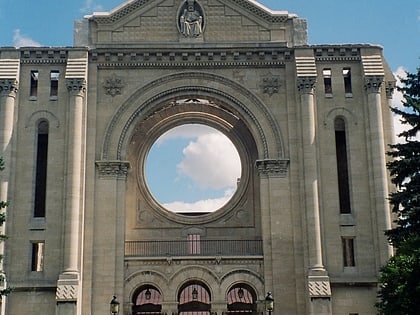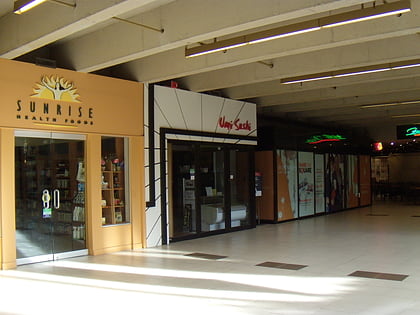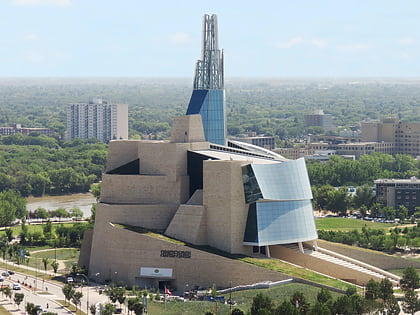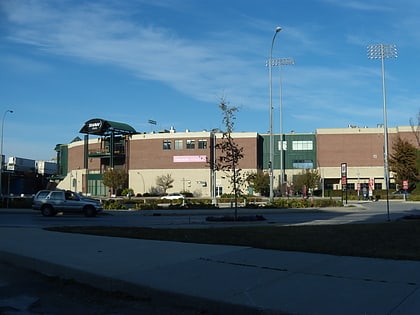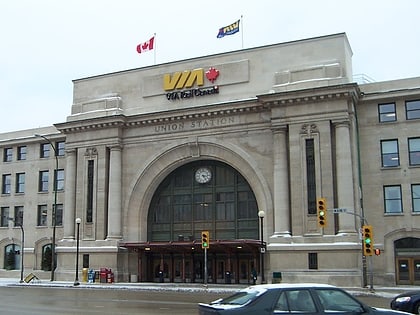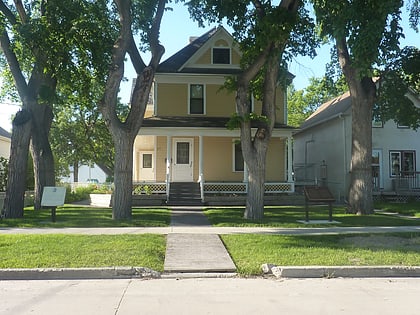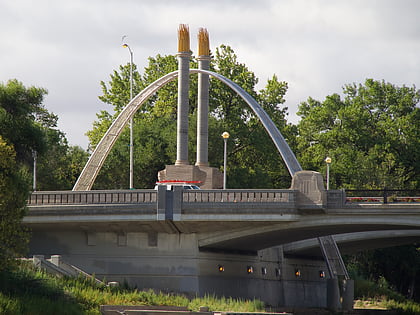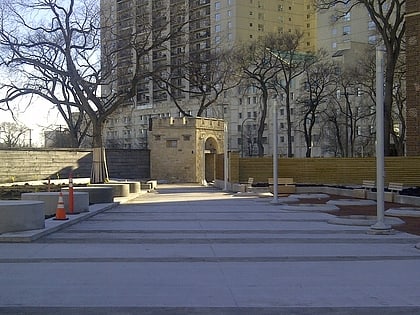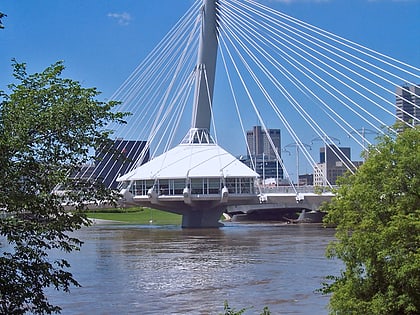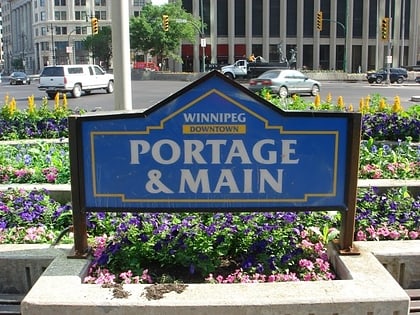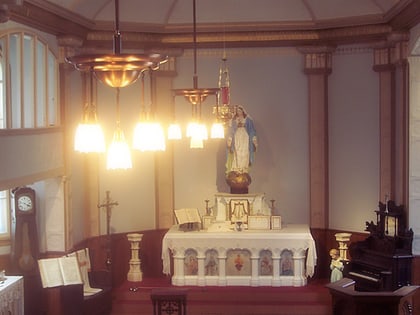Saint Boniface Cathedral, Winnipeg

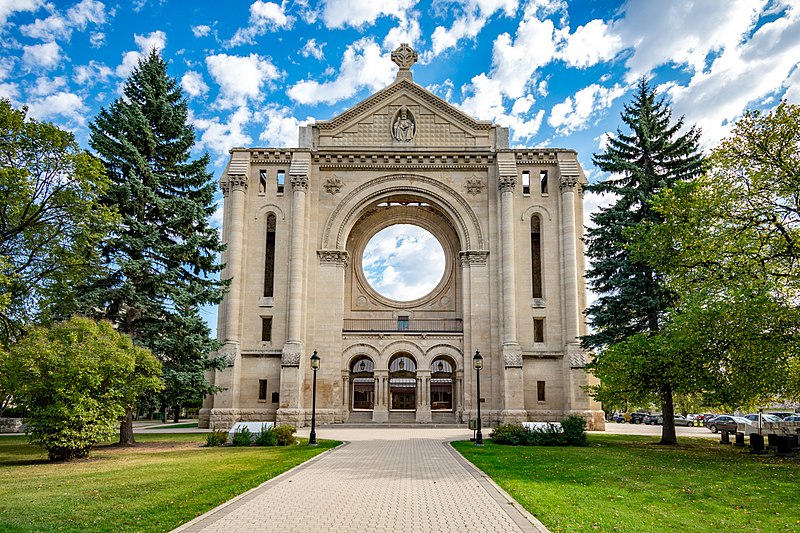
Facts and practical information
Nestled in the heart of Winnipeg, Canada, the Saint Boniface Cathedral stands as a testament to the city's rich Franco-Manitoban heritage. This iconic church, with its stunning architecture and historical significance, is not just a place of worship but also a landmark of cultural importance.
The current cathedral, an architectural blend of Romanesque and modern design, is built on the site of a series of churches, the first dating back to 1818. The most prominent predecessor, constructed in 1906, was tragically ravaged by fire in 1968. Today, the cathedral incorporates the remaining façade of the 1906 structure, which stands as a poignant reminder of the past, framing the entrance to the new church built in 1972.
The cathedral is renowned for its tranquil and reflective ambiance, with beautiful stained glass windows casting colorful patterns across the interior. The church's design seamlessly integrates the old with the new, symbolizing resilience and rebirth. Visitors can explore the rich history within its walls, including the tomb of Louis Riel, the famous Métis leader and founder of the province of Manitoba.
Saint Boniface Cathedral is not only a place for liturgical services but also a hub for the community, hosting various cultural events and gatherings. Its role in Winnipeg's society has cemented its status as a cornerstone of the city's Franco-Manitoban identity.
Saint Boniface Cathedral – popular in the area (distance from the attraction)
Nearby attractions include: Manitoba Children's Museum, Winnipeg Square, Canadian Museum for Human Rights, Shaw Park.
Frequently Asked Questions (FAQ)
Which popular attractions are close to Saint Boniface Cathedral?
How to get to Saint Boniface Cathedral by public transport?
Bus
- Eastbound De La Cathedrale at Aulneau West • Lines: 56 (1 min walk)
- Westbound De La Cathedrale at Aulneau • Lines: 56 (2 min walk)
Train
- Winnipeg (14 min walk)
